Noiser
The True Story of Amelia Earhart
Play Short History Of... Amelia Earhart
SUBHEAD: On July 2nd, 1937, Amelia Earhart disappeared over the Pacific Ocean while attempting to become the first female pilot to circumnavigate the globe. Thanks to her incredible achievements and mysterious disappearance, she remains one of the most iconic figures in aviation history. This is her story.
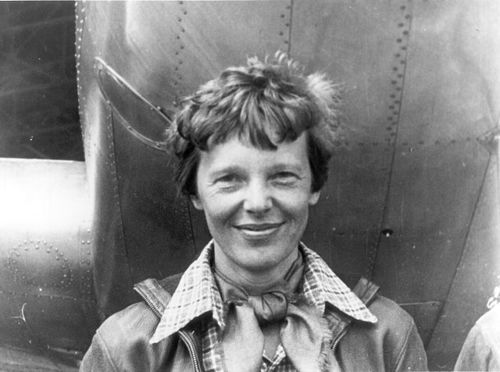
Early Life
Amelia Earhart was born in 1897 in Atchison, Kansas. She enjoyed a childhood typical of the period, although perhaps not typical for a girl. Amelia and her younger sister, Muriel, wore bloomers and ran feral. They collected frogs and worms. They learned to fix farm vehicles and shoot a .22 rifle when they hunted rats in their father’s barn.
From the time she was very young, she had a daredevil streak which never really left her.
Susan Butler, author of East to the Dawn, the Life of Amelia Earhart
Discovering Flight
In 1908, Amelia attended the Iowa State Fair. One of the famous pioneering Wright Brothers was there, giving a demonstration in his Model A biplane. The 11-year-old Amelia was uninspired by the rudimentary aircraft, later writing that it was a “thing of rusty wire and wood.” Although she was initially unimpressed by the sight of the plane, this encounter planted a seed that would later blossom into a profound passion for flying.
After finishing high school, she served as a nurse’s aide in Canada during World War I before becoming a social worker. It wasn’t until she was 23 that Amelia found her true calling.
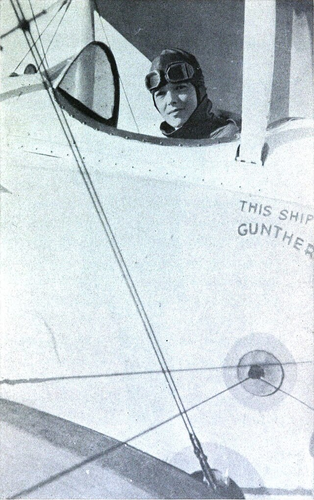 On December 28th, 1920, Amelia visited an air show at Long Beach Airport in Los Angeles with her father. Spotting a sign offering pleasure flights for ten dollars, She handed over her money and clambered into the open cockpit. Later, Amelia would say she was barely off the ground when she knew she had to fly.
On December 28th, 1920, Amelia visited an air show at Long Beach Airport in Los Angeles with her father. Spotting a sign offering pleasure flights for ten dollars, She handed over her money and clambered into the open cockpit. Later, Amelia would say she was barely off the ground when she knew she had to fly.
People took it up and discounted the fact that it was so dangerous. This was before parachutes were invented. It was daring, new, fun, and challenging.
Susan Butler, author of East to the Dawn, the Life of Amelia Earhart
Taking to the Skies
On January 3rd, 1921, Amelia completed her first flying lesson with Neta Snook, the only female instructor in California. She was instantly hooked and took a variety of part-time jobs to pay for more lessons. She cut her hair short—a practical style favoured by female flyers—and by the end of the year, she passed her flight test.
Now, she needed an aircraft. She saved up again and secured a loan from her mother to buy a secondhand Kinner Airster. It was an open-cockpit, two-seater, single-engine plane. Neta Snook thought it was a death trap, but Amelia was smitten with the bright yellow plane she called “the Canary.”
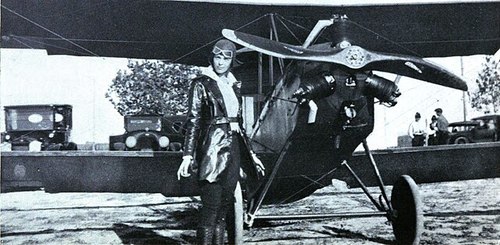 In 1928, Amelia burst onto the aviation scene in a big way. She was asked to be a passenger onboard a trans-Atlantic flight from Newfoundland, Canada, to Burry Port, Wales. Ostensibly, it was a PR exercise — flight was unregulated and dangerous in the 1920s, but many early pioneers believed that new safety measures and regulations meant air transport could become the future of commercial travel. If only the public weren’t scared by the idea of flying. So Amelia Earhart was put on board the Friendship to prove a point—under the right conditions, flying was safe. And it worked.
In 1928, Amelia burst onto the aviation scene in a big way. She was asked to be a passenger onboard a trans-Atlantic flight from Newfoundland, Canada, to Burry Port, Wales. Ostensibly, it was a PR exercise — flight was unregulated and dangerous in the 1920s, but many early pioneers believed that new safety measures and regulations meant air transport could become the future of commercial travel. If only the public weren’t scared by the idea of flying. So Amelia Earhart was put on board the Friendship to prove a point—under the right conditions, flying was safe. And it worked.
The entire world was fixated on her flight. For four days, the only headline in The New York Times was about Amelia Earhart, the first woman to fly the Atlantic.
Susan Butler, author of East to the Dawn, the Life of Amelia Earhart
Further Records
Amelia returned to the USA as a celebrity. Not content with the flight that made her a household name, Amelia kept pushing the envelope. On May 20th, 1932, she became the first woman to fly solo nonstop across the Atlantic Ocean. She was only the second person to achieve the feat, after Charles Lindbergh’s famous crossing of 1927. In August 1932, she became the first woman to fly solo nonstop coast-to-coast across the United States. She followed this with several record-breaking flights, including a solo flight from Hawaii to California in 1935, making her the first person to fly solo from Hawaii to the U.S. mainland.
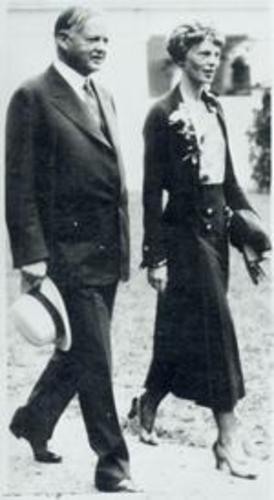 In addition to her incredible flying, Amelia worked tirelessly to promote women in aviation. She was a founding member of the Ninety-Nines, an organisation set up to support women pilots. Amelia became their figurehead and president in 1930.
In addition to her incredible flying, Amelia worked tirelessly to promote women in aviation. She was a founding member of the Ninety-Nines, an organisation set up to support women pilots. Amelia became their figurehead and president in 1930.
Disappearance
In 1937, Amelia set off on her most extraordinary feat yet. She wanted to become the first woman to circumnavigate the globe. On June 1st 1937, Amelia and her navigator Fred Noonan set off from Miami in their twin-engine Lockheed Electra. A place in the history books awaited.
Earhart and Noonan successfully crossed South America, Africa, Asia, and Australia. By late June, they had reached Lae, New Guinea, with only 7,000 miles remaining over the Pacific Ocean. On July 2nd, 1937, they took off from Lae and headed for Howland Island, a tiny island in the central Pacific. Despite radio communications with a U.S. Coast Guard ship stationed near Howland Island, Earhart and Noonan could not locate the island. Communication ceased, and they were never seen or heard from again.
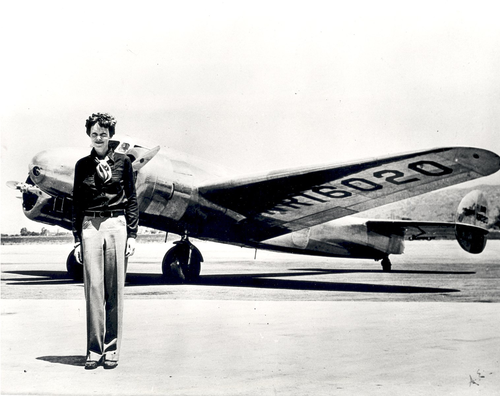
President Franklin D. Roosevelt ordered a search and rescue mission. The US Navy and Coast Guard scoured hundreds of thousands of square miles of ocean at a cost of four million dollars, to no avail. Ridiculous conspiracy theories began circulating - that Amelia was a spy, that she survived on a desert island for two weeks after the crash, and that the Japanese executed her. The most likely theory is that the plane ran out of fuel and, with nowhere to land, was lost to the ocean.
Amelia Earhart died a month before her 40th birthday. Her life was short but packed full of adventure. Though her final flight remains shrouded in mystery, Earhart's legacy as a pioneering aviator, feminist icon, and adventurer continues to inspire generations, reminding us that the sky is not the limit but only the beginning.
She was a very reasonable human being who was one of the few people in the world who used her power and influence in a very positive way.
Susan Butler, author of East to the Dawn, the Life of Amelia Earhart